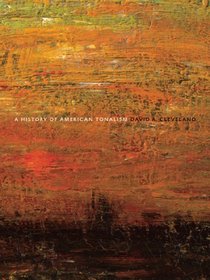Search -
A History of American Tonalism,1880-1920
A History of American Tonalism18801920
Author:
The History of American Tonalism is the first definitive account of the Tonalist movement that galvanized America's artistic life in the decades around 1900. At over 500 pages and 400-plus color illustrations, the History offers both a chronological narrative and contextual re-evaluation of this long neglected--and crucial missing-link in Ameri... more »
Author:
The History of American Tonalism is the first definitive account of the Tonalist movement that galvanized America's artistic life in the decades around 1900. At over 500 pages and 400-plus color illustrations, the History offers both a chronological narrative and contextual re-evaluation of this long neglected--and crucial missing-link in Ameri... more »
ISBN-13: 9781555953027
ISBN-10: 1555953026
Publication Date: 10/25/2009
Pages: 592
Rating: ?
ISBN-10: 1555953026
Publication Date: 10/25/2009
Pages: 592
Rating: ?
0 stars, based on 0 rating
Publisher: Hudson Hills Press LLC
Book Type: Hardcover
Members Wishing: 1
Reviews: Amazon | Write a Review
Book Type: Hardcover
Members Wishing: 1
Reviews: Amazon | Write a Review
Genres:
- Arts & Photography >> History & Criticism >> General
- Arts & Photography >> History & Criticism >> Regional >> United States
- Arts & Photography >> History & Criticism >> Schools, Periods & Styles >> Modern
- Arts & Photography >> Art >> General




